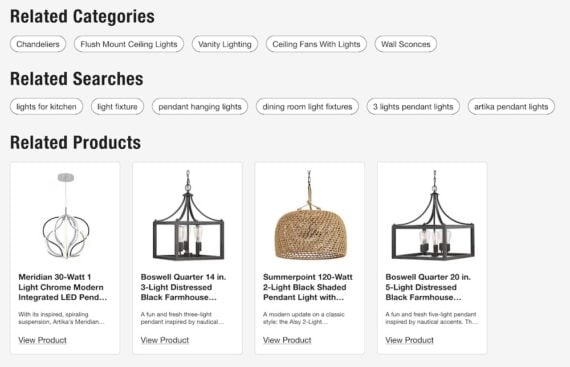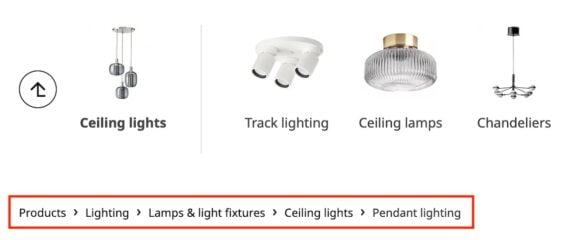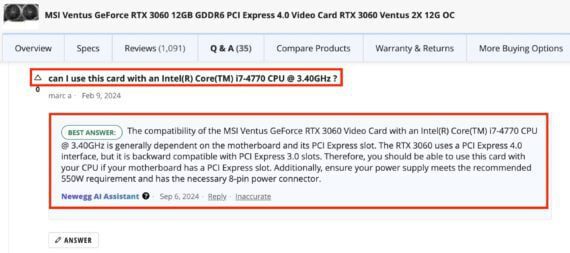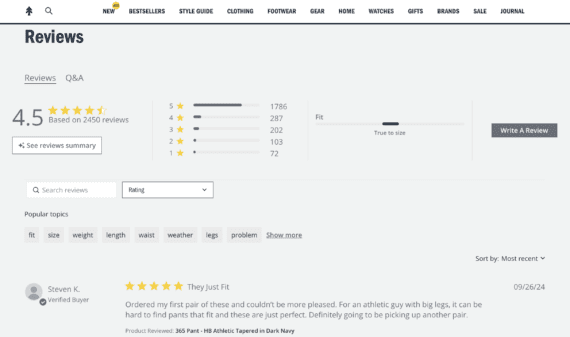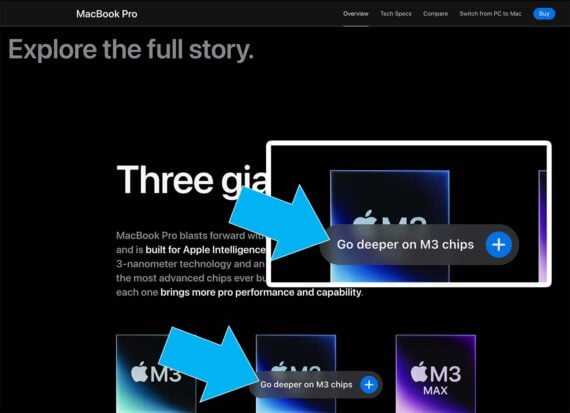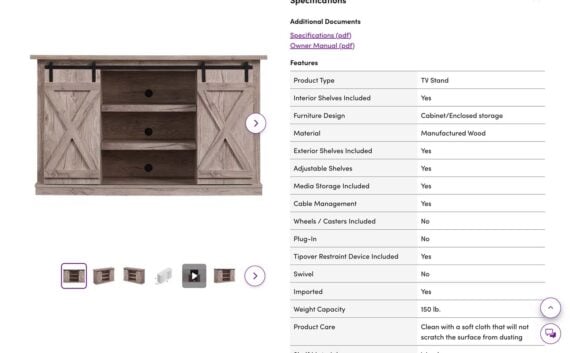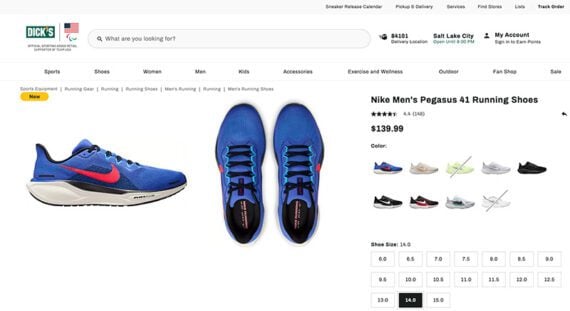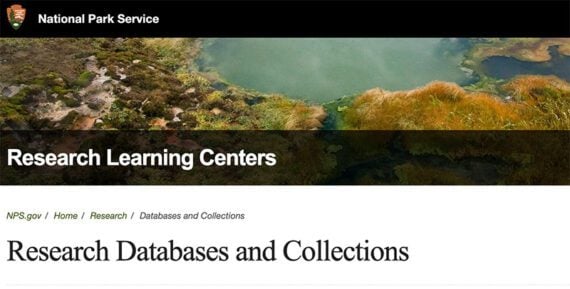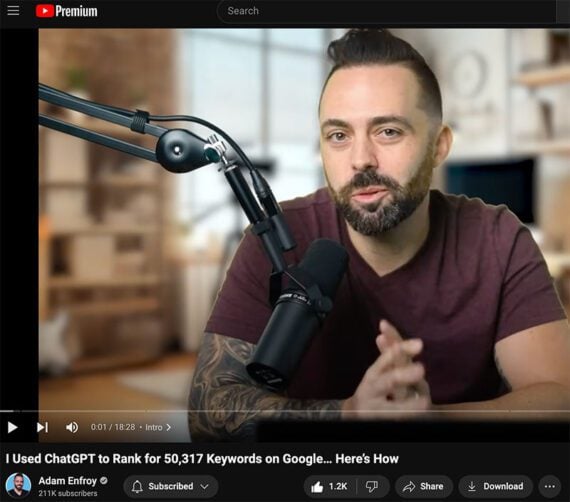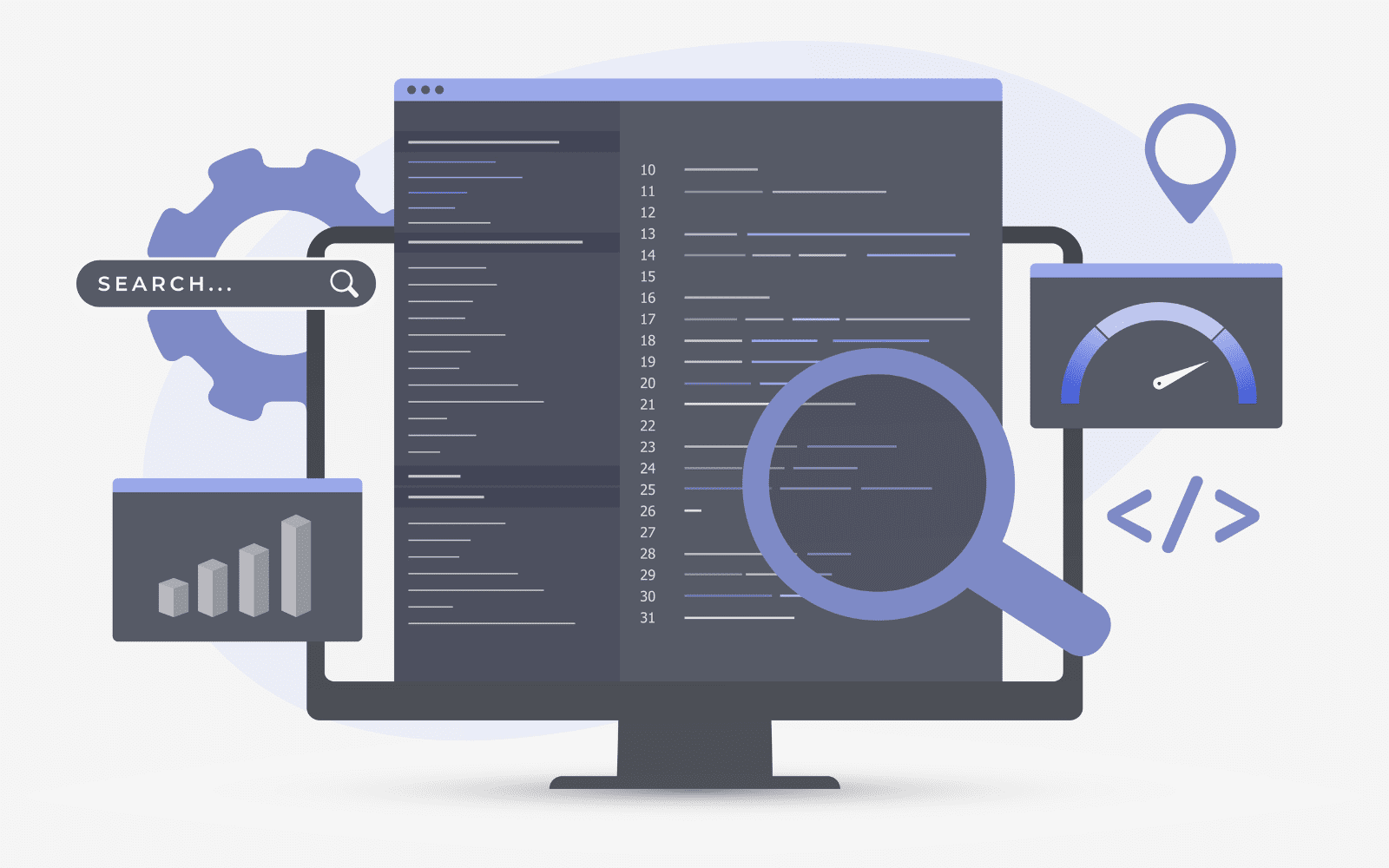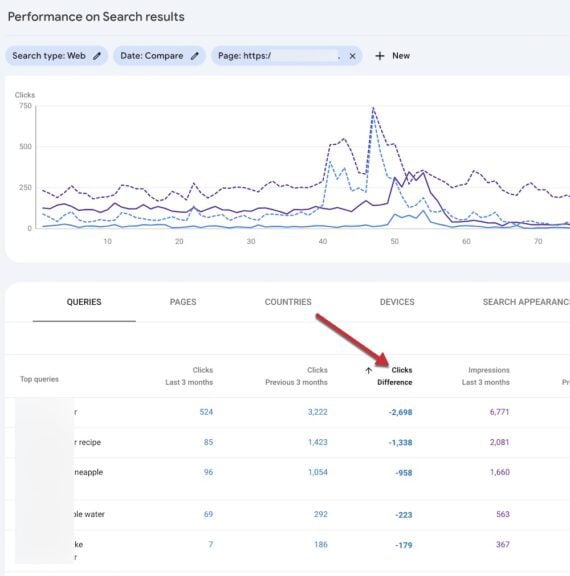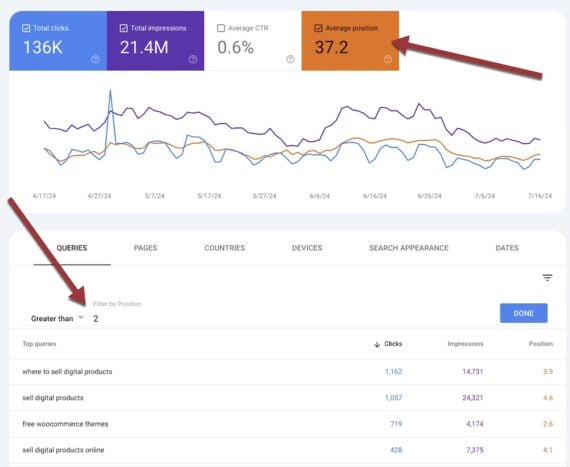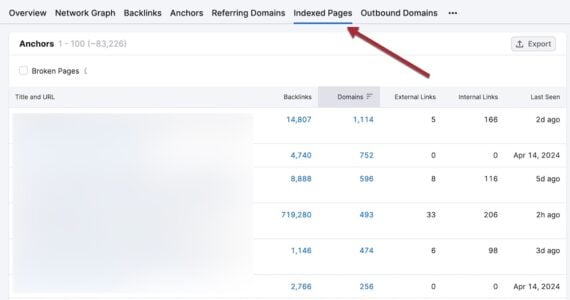18 Essential Accessibility Changes To Drive Increased Website Growth via @sejournal, @skynet_lv

This post was sponsored by “Skynet Technologies USA LLC”.
Did you know that 1 billion people have not reached you or your customers’ websites yet.
1 billion potential customers are waiting for businesses to step up and do what’s right.
Find out if your website is accessible to 1 billion people >>>
Accessibility isn’t just a compliance checkbox anymore – it’s a growth strategy.
The demand for scalable, innovative accessibility solutions has skyrocketed.
And your competition is already making these improvements.
For agencies, this means an unprecedented opportunity to meet clients’ needs while driving revenue.
Learn how you can generate additional revenue and boost your clients’ SERP ranking by gaining access to:
Ready to get started?
How Accessibility Improvements Can Increase Growth
The digital economy thrives on inclusion.
There is a large market of individuals who are not included in modern website usability.
With over a billion people globally living with disabilities, accessible digital experiences open doors to untapped markets.
Do Websites Need To Be Accessible?
The short answer is yes.
How Does An Accessible Website Drive Traffic?
Traffic comes from people who have needs. Of course, everyone has needs, including people with disabilities.
Accessible websites and tools cater to all users, expanding reach to a diverse and often overlooked customer base.
Global Potential & Unlocking New Audiences
From a global perspective, the global community of people with disabilities is a market estimated to hold a staggering $13 trillion in spending power.
By removing barriers and ensuring inclusive digital experiences, you can tap into this 1 billion-person market and drive substantial economic growth.
Digital accessibility helps to increase employment opportunities, education options, and simple access to various banking and financial services for everybody.
Boosts User Experience & Engagement
Accessibility improvements run parallel with SEO improvements.
In fact, they often enhance overall website performance, which leads to:
- Better user experience.
- Higher rankings.
- Increased traffic.
- Higher conversion rates.
Ensures Your Websites Are Compliant
Increasing lawsuits against businesses that fail to comply with accessibility regulations have imposed pressure on them to implement accessibility in their digital assets.
Compliance with ADA, WCAG 2.0, 2.1, 2.2, Section 508, Australian DDA, European EAA EN 301 549, UK Equality Act (EA), Indian RPD Act, Israeli Standard 5568, California Unruh, Ontario AODA, Canada ACA, German BITV, Brazilian Inclusion Law (LBI 13.146/2015), Spain UNE 139803:2012, France RGAA standards, JIS X 8341 (Japan), Italian Stanca Act, Switzerland DDA, Austrian Web Accessibility Act (WZG) guidelines aren’t optional. Accessibility solution partnerships ensure to stay ahead of potential lawsuits while fostering goodwill.
6 Steps To Boost Your Growth With Accessibility
- To drive growth, your agency should prioritize digital accessibility by following WCAG standards, regularly testing with tools like AXE, WAVE, or Skynet Technologies Website Accessibility Checker, and addressing accessibility gaps. Build accessible design frameworks with high-contrast colors, scalable text, and clear navigation.
- Integrate assistive technologies such as keyboard navigation, screen reader compatibility, and video accessibility. Focus on responsive design, accessible forms, and inclusive content strategies like descriptive link text, simplified language, and alternative formats.
- Providing accessibility training and creating inclusive marketing materials will further support compliance and growth.
- To ensure the website thrives, prioritize mobile-first design for responsiveness across all devices, adhere to WCAG accessibility standards, and incorporate keyboard-friendly navigation and alt text for media.
- Optimize page speed and core web vitals while using an intuitive interface with clear navigation and effective call-to-action buttons, and use SEO-friendly content with proper keyword optimization and schema markups to boost visibility.
- Ensure security with SSL certificates, clear cookie consent banners, and compliance with privacy regulations like GDPR and CCPA. Finally, implement analytics and conversion tracking tools to gather insights and drive long-term growth.
We know this is a lot.
If this sounds good to you, let us help you get set up.
How Can Digital Accessibility Partnerships Supercharge Your Clients’ SEO?
Partnering for digital accessibility isn’t just about inclusivity — it’s a game-changer for SEO, too!
Accessible websites are built with cleaner code, smarter structures, and user-friendly features like alt text and clear headings that search engines love.
Plus, faster load times, mobile-friendly designs, and seamless navigation keep users engaged, reducing bounce rates and boosting rankings. When you focus on making a site accessible to everyone, you’re not just widening your audience—you’re signaling to search engines that the website is high-quality and relevant. It’s a win-win for accessibility and SEO!
12 Essential Factors To Consider For Successful Accessibility Partnerships
- Expertise: Look for a provider with a proven track record in digital accessibility, including knowledge of relevant global website accessibility standards and best practices.
- Experience: Consider their experience working with similar industries or organizations.
- Tools and technologies: Evaluate their use of automated and manual testing tools to identify and remediate accessibility issues.
- Price Flexibility: Explore pricing models that align with both the budget and project requirements. Whether for a single site or multiple sites, the service should be compatible and scalable to meet the needs.
- Platform Compatibility: Ensure seamless accessibility integration across various platforms, providing a consistent and accessible experience for all users, regardless of the website environment.
- Multi-language support: Enhance user experience with global language support, making websites more inclusive and accessible to a global audience.
- Regular check-ins: Schedule regular meetings to discuss project progress, address any issues, and make necessary adjustments.
- Clear communication channels: Establish clear communication channels (for example: email, and project management tools) to facilitate efficient collaboration.
- Transparent reporting: Request detailed reports on the progress of accessibility testing, remediation efforts, and overall project status.
- KPIs to measure success: Review the partner’s historical data, especially those similar projects in terms of scale, complexity, and industry.
- Evaluate technical expertise: Assess their proficiency in using various accessibility testing tools and ability to integrate different APIs.
- Long-term partnership strategy: Compare previous data with the current one for improvement and optimization process. It is crucial for a long-term partnership that there is a specific interval of review and improvements.
Scaling Accessibility With Smart Partnerships
All in One Accessibility®: Simplicity meets efficiency!
The All in One Accessibility® is an AI-powered accessibility tool that helps organizations to enhance their website accessibility level for ADA, WCAG 2.0, 2.1, 2.2, Section 508, Australian DDA, European EAA EN 301 549, UK Equality Act (EA), Indian RPD Act, Israeli Standard 5568, California Unruh, Ontario AODA, Canada ACA, German BITV, Brazilian Inclusion Law (LBI 13.146/2015), Spain UNE 139803:2012, France RGAA standards, JIS X 8341 (Japan), Italian Stanca Act, Switzerland DDA, Austrian Web Accessibility Act (WZG), and more.
It is available with features like sign language LIBRAS (Brazilian Portuguese Only) integration, 140+ multilingual support, screen reader, voice navigation, smart language auto-detection and voice customization, talk & type, Google and Adobe Analytics tracking, along with premium add-ons including white label and custom branding, VPAT/ACR reports, manual accessibility audit and remediation, PDF remediation, and many more.
- Quick Setup: Install the widget to any site with ease—no advanced coding required.
- Feature-Rich Design: From text resizing and color contrast adjustments to screen reader support, it’s packed with tools that elevate the user experience.
- Revenue Opportunities: Agencies can resell the solution to clients, adding a high-value service to their offerings while earning attractive commissions through the affiliate program.
- Reduced development costs: Minimizes the financial impact of accessibility remediation by implementing best practices and quick tools.
Agency Partnership: Scaling accessibility with ease!
- Extended Service Offerings: The All in One Accessibility® Agency Partnership allows agencies to offer a powerful accessibility widget – quick accessibility solution into their services, enabling them that are in high demand.
- White Label: As an agency partner, you can offer All in One Accessibility® under their own brand name.
- Centralized Management: It simplifies oversight by consolidating accessibility data and reporting, allowing enterprises to manage multiple websites seamlessly.
- Attractive Revenue Streams: Agencies can resell the widget to clients, earning significant revenue through competitive pricing structures and repeat business opportunities.
- Boost Client Retention: By addressing accessibility needs proactively, agencies build stronger relationships with clients, fostering long-term loyalty and recurring contracts.
- Increase Market Reach: Partnering with All in One Accessibility® positions agencies as leaders in inclusivity, attracting businesses looking for reliable accessibility solutions.
- NO Investment, High Return: With no setup costs, scalable features, and up to 30% commission, the partnership enables agencies to maximize profitability with their clients.
Affiliate Partnership: A revenue opportunity for everyone!
The All in One Accessibility® Affiliate Partnership program is for content creators, marketers, accessibility advocates, web professionals, 501 (c) organizations (non-profit), and law firms.
- Revenue Growth through Referrals: The All in One Accessibility® affiliate partnership allows affiliates to earn competitive commissions by promoting a high-demand accessibility solution, turning referrals into consistent revenue.
- Expanding Market Reach: Affiliates can tap into a diverse audience of businesses seeking ADA and WCAG compliance, scaling both revenue and the adoption of accessibility solutions.
- Fostering Accessibility Awareness: By promoting the All in One Accessibility® widget, affiliates play a pivotal role in driving inclusivity, helping more websites become accessible to users with disabilities.
- Leveraging Trusted Branding: Affiliates benefit from partnering with a reliable and recognized quick accessibility improvement tool, boosting their credibility and marketing impact.
- Scaling with Zero Investment: With user-friendly promotional resources and a seamless onboarding process, affiliates can maximize returns without any costs.
Use Accessibility As A Growth Engine
Endeavoring for strategic partnerships with accessibility solution providers is a win-win for agencies aiming to meet the diverse needs of their clients. These partnerships not only enhance the accessibility of digital assets but also create opportunities for growth, and loyalty, top search engine rankings, boost revenue, improve compliance with legal standards, and make you to contribute into digital accessibility world.
With Skynet Technologies USA LLC, Transform accessibility from a challenge into a revenue-driving partnership. Let inclusivity power the success.
Ready to get started? Embarking on a digital accessibility journey is simpler than you think! Take the first step by evaluating the website’s current WCAG compliance with a manual accessibility audit.
For more information, Reach out hello@skynettechnologies.com.
Image Credits
Featured Image: Image by Skynet Technologies. Used with permission.

















